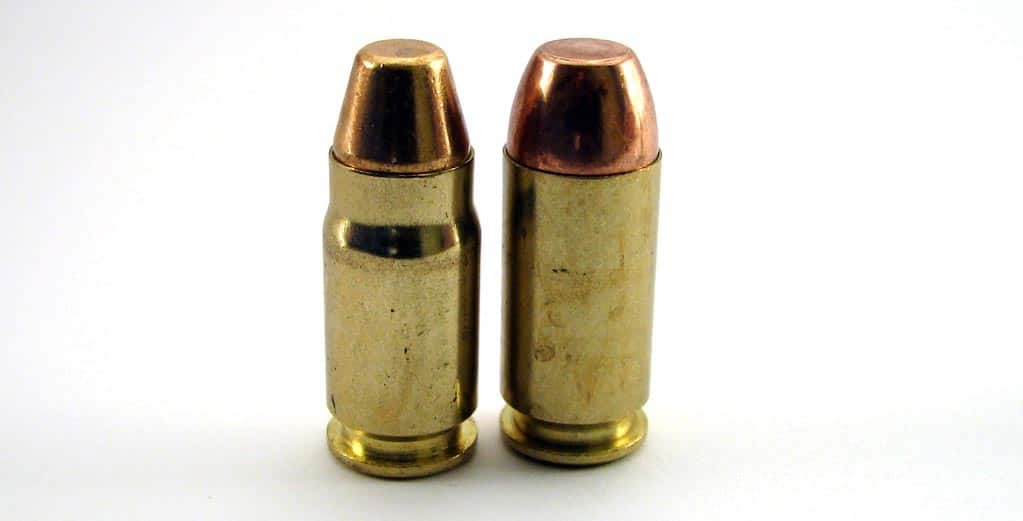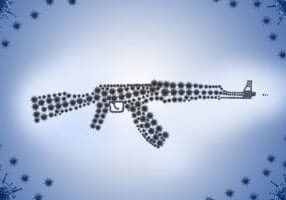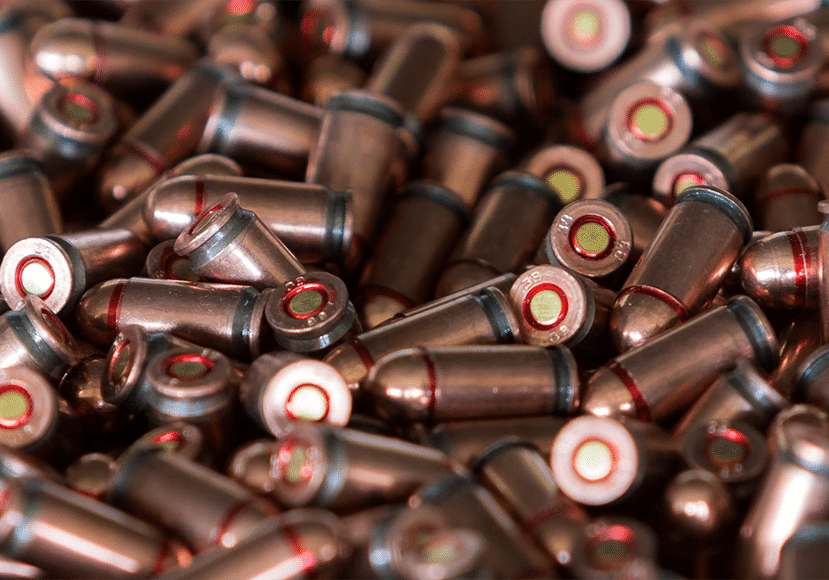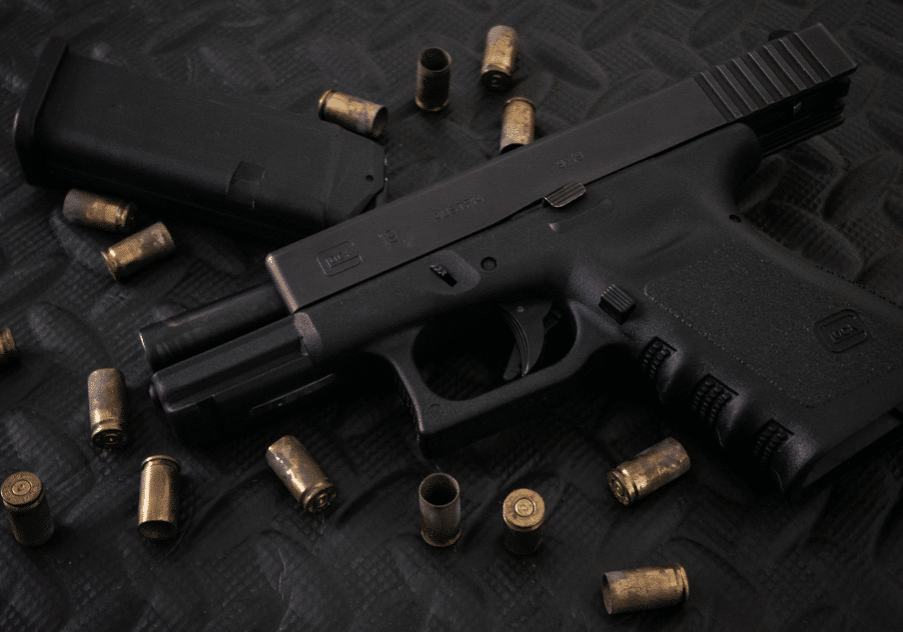357 SIG vs 40 S&W Caliber Comparison (History and Performance)
The 1990s was a fascinating of period of time in firearms history. It was a time denoted by several advancements in ballistics technology, which helped shaped popular cartridges like 9mm into what they are today. And it was also a time where several new cartridges were given their chance among law enforcement agencies in the US to potentially replace cartridges like 9mm.
In this comparison guide we will be taking a look at two such calibers: .357 SIG vs .40 S&W
We’ll be going into detail on the differences between these two calibers, but before we do that I want to cover some background information on what was happening during the late 80’s up until present day. This will give us a clearer picture on how each of these calibers came to be, as well as provide insight into their rise and fall in popularity.
9mm Falls Out of Favor With US Law Enforcement
To get a full picture on how .40 S&W and .357 SIG came to be, we need to go back to the year 1986. As some of you might remember, 1986 was the year the infamous Miami FBI shootout took place, wherein 8 FBI agents, armed with six-shot .38 Special revolvers and 9mm pistols, almost lost a gunfight to two serial bank robbers. William Russell Matix and Michael Platt were both hit multiple times during the shootout, but were able to continue fighting, killing 2 agents and wounding another 5 before being downed.

The FBI had been steadily replacing .38 Special revolvers with 9mm at this point, but in the aftermath of the shootout the efficacy of 9mm was being brought into question. The primary concern was that the round simply didn’t have enough stopping power.
With this in mind, the FBI began to conduct ballistics testing to potentially find a new official sidearm caliber. .45 ACP was thought to be the likely replacement caliber at the onset of testing, but ultimately the FBI elected to go with the 10mm Auto cartridge. This was a fairly new load, first developed in 1984, and prior to the FBI’s adoption hadn’t been used by any law enforcement agency.
While 10mm did pack significantly greater stopping power than any other semi-auto cartridge at that time, it came with numerous drawbacks, chief among them being the relatively massive recoil it generated. The FBI likely knew that 10mm wouldn’t be an effective long term solution, and for this reason they put in a request with Smith & Wesson to develop a brand new cartridge, one with similar ballistics of 10mm, but with more manageable recoil.
.40 S&W Enters Into Market
The all-new .40 S&W cartridge debuted on January 17, 1990, and began to gain traction among both law enforcement agencies and civilian gun buyers almost immediately. The cartridge had close to identical dimensions to the 10mm, but with a shorter case and overall cartridge length, making it small enough to fit into the medium-frame of 9mm handguns.
One of the key factors to the .40 S&W cartridge’s early success was due to its adoption by Glock. By 1990, the new wave of lightweight polymer pistols had begun to take a foothold on the firearms market, with Glock leading the way. Many law enforcement agencies signed contracts with Glock to produce .40 S&W Glock 23, which helped .40 S&W gain respect among commercial gun buyers.
.357 SIG Attempts to Overtake .40 S&W

While .40 S&W continued to grow in popularity leading into the mid-90s, leading firearm manufacturers Sig Sauer and Federal formed a joint partnership to develop their own all-new semi-automatic cartridge. .357 SIG debuted in 1994 and it was hoped by its developers to be an even better alternative to 9mm than .40 S&W.
The .357 SIG cartridge was patterned in part after its predecessors— It had a similar case length as 10mm and a bullet diameter equivalent to 9mm. As the name suggests, the .357 SIG cartridge was designed to have similar ballistics to the .357 Magnum cartridge, which would make it more powerful than 9mm and .40 S&W. The cartridge’s design also had some unique characteristics. It featured a bottleneck design, characterized by a straight-walled case with no shoulder; this type of design hadn’t been seen on a semi-automatic handgun cartridge since the early 1960s.
.357 SIG achieved some early success after being adopted by several state-level law enforcement agencies, who later reported that the cartridge performed well in the field. Despite this, .357 SIG was never able to gain much traction in the greater firearms market and eventually disappeared into relative obscurity. .40 S&W meanwhile continued to grow in popularity throughout the 90’s, and then in the 2000’s a new and improved 9mm re-established itself as the best all around semi-automatic handgun cartridge in the world.
Why Did .357 SIG Fail?
So what happened with .357 SIG? We’ll expand on potential performance drawbacks to the cartridge in the following section, but I think it’s worth noting here that .357 SIG is by no means a bad caliber.
In my opinion, .357 SIG was doomed to fail from the start largely due to the competition in the firearms market, especially during the 1990s. During this time, calibers like 9mm and .45 ACP had already been in the market for nearly a century, and they had already established themselves in military and law enforcement. This alone made for an uphill battle for the .357 SIG cartridge.
On top of that, .357 SIG entered into the market shortly after the release of .40 S&W — a cartridge which got a huge push from law enforcement agencies and the FBI, and had contracts in place to provide handguns to these agencies through leading manufacturers like Glock.
The final nail in the coffin for .357 SIG was the notable improvements in ballistics technology that led to the revolution of the 9mm cartridge. This is the same factor that ultimately ended .40 S&W’s chance of being the world’s most popular defensive handgun caliber too.
FBI ballistics testing during the early 2000s concluded that the modernized 9mm cartridge achieved better bullet penetration than any other cartridge on the market, while also being one of the easiest rounds for agents to handle. One FBI report summed it up best:
“The Ballistic Research Facility has conducted a test which compares similar sized Glock pistols in both .40 S&W and 9mm calibers, to determine if more accurate and faster hits are achievable with one versus the other. To date, the majority of the study participants have shot more quickly and more accurately with 9mm caliber Glock pistols. The 9mm provides struggling shooters the best chance of success while improving the speed and accuracy of the most skilled shooters.”
Where are .40 S&W and .357 SIG Today?
.40 S&W and .357 SIG each still have a loyal following even to this day, largely among law enforcement agents who were issued this cartridges back in the 1990s. While these cartridges remain in production, there’s no evidence suggest that their popularity will ever reach new highs. 9mm remains the cartridge to beat in the world of modern handguns, and until something truly revolutionary comes along, this will likely remain the state of things.
Nevertheless, .40 S&W and .357 SIG remain viable calibers for self-defense and for the sake of intellectual curiosity I thought it would be interesting to explore how these two cartridges stack up in a side by side comparison. So let’s get started.
.357 SIG vs .40 S&W
Now that we’ve covered some background information on .357 SIG vs .40 S&W, let’s dive into a side by side comparison of these two calibers.
Stopping Power and Ballistics
The best way to examine any potential differences in power between the 9mm and .357 SIG is by comparing ballistics gel testing data. There are two major data categories here we want to analyze: penetration depth and bullet diameter expansion.
Penetration Depth - According to the FBI, a bullet’s ideal penetration depth in standardized ballistics gel testing is somewhere between 12 to 18 inches. Any shallower than 12 inches and a bullet runs the risk of not penetrating an attacker’s vital organs (the FBI has stated that particularly with handgun cartridges, a bullet must penetrate vital organs in order to be fatal). Conversely, a bullet should not penetrate beyond 18 inches as it will then run the risk of overpenetration. A bullet that overpenetrates is dangerous as it may potentially hit an innocent bystander located behind the target.
Bullet Diameter Expansion - Hollow-point self-defense ammunition is designed to expand or ‘flower’ upon impact with a soft target. This expansion makes the bullet considerably more lethal, and generally speaking the greater the expansion the better the bullet.
As we can see from the data, both .40 S&W and .357 SIG perform quite similarly in terms of penetration depth and average bullet diameter. Perhaps the most notable difference in performance based on the graphs above is the generally higher muzzle velocities achieved by the .357 SIG loads. Higher muzzle velocity can play a role in increased stopping power, but it comes with other more notable advantages we will expand on in the next section.
Let's take a look at testing results of defensive handgun calibers from Lucky Gunner (Which is also one of the best places to buy ammo online, see our Lucky Gunner Review).
.40 S&W

.357 SIG

As we can see in the images above, .357 SIG loads have a significantly higher muzzle velocity than .40 S&W. Both options had some loads stick in the FBI's sweet spot for penetration depth, though .357 SIG is more prone to overpenetration. .40 S&W also generally has greater bullet expansion.
Muzzle Flash and Gun Wear - Negatives of .357 SIG
The data above also leads us to some of the complaints of .357 SIG when compared vs .40 S&W or other handgun calibers.
.357 SIGs high muzzle velocity and relatively high pressures causes increased wear on handguns compared to other calibers. It can also have significant muzzle flash, a somewhat rare problem for handgun loads.
The topic of muzzle flash isn’t something I typically cover when comparing handgun cartridges, but it does become an interesting point of discussion when comparing .357 SIG with its competitors.
Muzzle flash is generally considered a bad thing, as excess muzzle flash can potentially blind the shooter temporarily if firing in dimly lit areas, and in tactical situations muzzle flash could give away a shooter’s position if shooting undercover.
However, I’ve also come across interesting anecdotal reports online from police officers, who argue that the powerful muzzle flash and blast from the .357 SIG cartridge was effective at causing “psychological stops” (a psychological stop is an involuntarily psychological reaction, wherein an attacker’s body stops physically working even though he may have not been hit by a knockdown shot. Somewhat similar to the temporary incapacitation caused by flashbang grenades). I couldn’t find any hard evidence that high muzzle flash rounds actually do increase the likelihood of these psychological stops, but it’s nonetheless interesting.
Velocity, Range, and Recoil - Pros of .357 SIG
The higher velocity and design of the projectile of .357 SIG vs .40 S&W helps it to carry to further distances without as much drop. Though this generally isn't really a concern for concealed carry or most defensive situations, it's worth mentioning.

Despite the higher muzzle velocity of .357 SIG, it has similar or less recoil energy than .40 S&W, as this data from Chuck Hawks recoil table shows us.
| Cartridge (Wb@MV) | Pistol Weight (lbs) | Recoil Energy (ft lbs) | Recoil Velocity (fps) |
|---|---|---|---|
| .357 SIG (125 at 1350) | 1.75 | 7.4 | 16.6 |
| .40 S&W (155 at 1200) | 1.5 | 10.6 | 21.3 |
| .40 S&W (165 at 1080) | 1.5 | 9.3 | 19.9 |
| .40 S&W (180 at 1027) | 1.5 | 10.4 | 21.2 |
Availability and Price
The biggest knock against .357 SIG vs .40 S&W and other calibers is its availability and price.
For starters, there's not many firearms manufacturers who make handguns chambered in .357 SIG. There's also fewer ammunition manufacturers with a line of .357 ammo.
This generally leads to .357 SIG ammo being significantly more expensive than .40 S&W and other calibers, particularly when talking about practice ammo. The table below shows a rough price range estimation of 9mm, 40 S&W, and 357 SIG from our favorite online ammo stores.
| Caliber | FMJ Price per Round | HP Price per Round |
|---|---|---|
| 9mm | $0.14-$0.36 | $0.28-$1.95 |
| .40 S&W | $0.20-$0.44 | $0.33-$2.20 |
| .357 SIG | $0.42-$0.50 | $0.48-$1.90 |
Conclusion
Hopefully the information in this 357 SIG vs 40 S&W comparison helped you decide which caliber is right for you. Ultimately, the decision of what caliber firearm you choose to carry comes down to you.
If you've chosen a caliber, check out the following guides for the best ammo.




